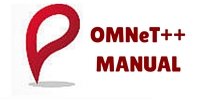Wireless communications are critical for public protection and disaster relief (PPDR) professionals during the emergency operations that follow natural or man-made disasters, scenarios in which both commercial and dedicated terrestrial networks often fail to provide the necessary support. The reason is threefold: they simply get destroyed by the disaster, they cannot sustain the sudden surge […]
Read moreLoad balancing is one of the key target of LTE Self-Optimization Network (SON). In this paper, we propose a load balancing method for LTE downlink network, namely Load Vector Minimization based Load Balancing (LVMLB) method. Load Vector (LV) is a vector whose elements are the load values of cells and sorted in descending order. The order of LVs is […]
Read moreWith the help of digital resources, self-description of smart objects causes some limitation into the input qualities because of the long established physical appearances. Also to realize the capability of objects to understand and recognize the data. If an uninstrumented surface is provided, the object should be able to sense gestures and touches upon the […]
Read moreProtocol for improved energy efficiency in wireless sensor networks to support mobile robots
In this paper we propose a low cost and computationally inexpensive adaptive transmission power control algorithm for wireless sensors to communicate with the base station or hub. This power control algorithm can be used in scenarios where the transmitting station is not static and the distance between the transmitter and the receiving station changes with […]
Read moreThe Internet of Things (IoT) has the strong potential to support a human society interacting more symbiotically with its physical environment. Indeed, the emergence of tiny devices that sense environmental cues and trigger actuators after consulting logic and human preferences promises a more environmentally aware and less wasteful society. However, the IoT inherently challenges software […]
Read moreWe consider wireless sensor networks (WSNs) used for distributed estimation of unknown parameters. Due to the limited bandwidth, sensor nodes quantize their noisy observations before transmission to a fusion center (FC) for the estimation process. In this letter, the correlation between observations is exploited to reduce the mean-square error (MSE) of the distributed estimation. Specifically, […]
Read moreThe correct inference of gene regulatory network plays a critical role in understanding biological regulation in cells and genome based therapeutics. DNA microarray is the most widely used technology for extracting the relationships between thousands of genes simultaneously. Since S-system is based on the rate law, it is considered as a suitable mathematical model for […]
Read moreBody sensors have gained increasing interest during the past several years. With more applications deployed, it is imperative to ensure the success of data analysis, which largely depends on data transmission reliability as well as the importance of samples received. Traditional approaches focus on improving data reliability through various schemes such as prioritization of MAC […]
Read moreNear-Body Shadowing Analysis at 60 GHz
A numerical model of the fading of a receiver located near the user body at 60 GHz in an indoor environment is presented. The model is based on the indoor channel model IEEE 802.11ad. The results are presented for a receiver located in a zone from 5 to 30 cm away from the body. With the shadowing depending […]
Read moreLong Term Evolution Advanced (LTE-A) Release 12 allows direct communication among User Equipments (UEs). This is called Proximity Services (ProSe) or Device-to-Device (D2D) communication providing increased spectral efficiency and lower packet latency. As a drawback, interference aware scheduling for D2D communication is even more challenging than for a reuse-1LTE-A scenario. In this paper we formulate […]
Read more